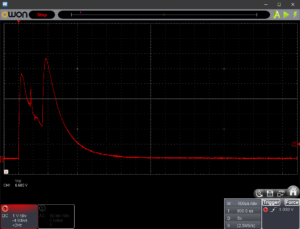There is little doubt that the nanoVNA has made VNAs very popular in the ham community, possibly more so that any other device.
Eager owners are trying to apply them to solve lots of problems, often without sufficient knowledge or experience to properly inform the measurements.
An example that has a appeared a few times on online forums in the last weeks is measuring the matched line loss (MLL) of a section of RG6 coax… to inform a decision to discard it or keep it.
The common approach is to use a measurement of |s11| and to calculate Return Loss and infer the MLL.
DUT
For discussion, lets consider an example of 30′ of Belden 1694A RG6 solved in Simsmith. We should note that unlike most RG6 in the market today, this uses a solid copper centre conductor.
Short circuit termination
Some authors insist that the half return loss method is to be performed using a short circuit test section. Bird does this in their Bird 43 manual.
Above is a plot of calculated |s11| (-ReturnLoss) from 1 to 20MHz for the test section. The three plots are of |s11| wrt 50Ω, 75Ω and frequency dependent actual Zo (as calculated for the model). The cursor shows that the actual |s11| is -0.37474dB (ReturnLoss=0.37474dB). Using the half return loss method MLL=ReturnLoss/2=0.37474=0.187dB/m. Continue reading nanoVNA-H – woolly thinking on MLL measurement








